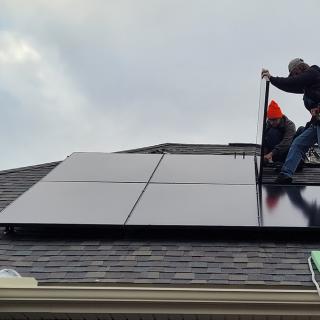Advertisement
You know you’ve got a heart (or at least I think you do). You know you have lungs. You know you possess a spine (well, at least some people do …). Kidding aside, these organs permit your body – and you – to function. Respectively, they are part of your circulatory system, your respiratory system and your nervous system. I’m going to tell you about another bodily system that is also integral to you.
It is called the “endocannabinoid” system (ECS), pronounced [en‧duh‧kuh‧nab‧uh‧noid].
I’ll bet you’ve heard of marijuana. No? Do you have a brain? Our favorite herb is often referred to by its scientific name: cannabis. It’s an ancient plant species that has followed mankind from prehistoric times through the present and will continue onward through millennia so long as there are humans. Its ties bind plants, mammals and mankind together.
Marijuana is a compound of over 450 chemicals. The 80 that are unique to the plant are each termed a cannabinoid. [pronunciation: “can-na-bin-oid”]
No doubt you have been high on marijuana – half of American has. The cannabinoid that causes the high is THC (abbreviation of its chemical name). Other common cannabinoids by their abbreviations include CBD, CBG, CBN … and 76 more.
Attempting to understand the marijuana high led Israeli scientist Raphael Mechoulam to discover THC and CBD in the 1960s. Twenty years later, this quest found “cannabinoid receptors” in the brain of a rat.
To grasp the concept of “receptors,” you have to dig down to the microscopic level. There you will find specialized cells that your body uses to detect stimuli (changes in their environments). Once detected, these receptors will initiate a variety of processes depending on the tissue. Receptors specifically for cannabinoids (yes, like marijuana) are embedded in the cell membranes where bodily systems intersect (circulatory, respiratory, nervous, etc.), enabling them to communicate and coordinate with one another. Think lock and key. The key (cannabinoid) inserted into the lock (receptor) opens the door (initiates a process). These receptors, called CB1 and CB2, exist in abundance all over your body.
Marijuana does all that? Well, not alone. In the mid-1990s, while trying to figure out why there are so many cannabinoid receptors, Dr. Mechoulam made another major discovery. We grow our own! Yes, inside your body (endo) you produce your own cannabinoids! He called the very first one Anandamide, “ananda” meaning “bliss” in Sanskrit.
In essence, the quest to understand what it means to be high led scientists to discover a whole new bodily system essential to human health. Because it is based on cannabinoids (similar to those in the cannabis plant) that are internal to the body (endo), this system has been termed the “endocannabinoid” system. As Dr. Mechoulam put it, “By using a plant that has been around for thousands of years, we discovered a new physiological system of immense importance …”
What is the purpose of this cannabis-based bodily system? One word: homeostasis. Think stability. Think harmony. While the endocannabinoid system performs many different tasks depending on the organ or tissue, its singular purpose is to help your body maintain the level of stability necessary for your survival. Thus, in the quest for homeostasis, the cannabinoids will stimulate appetite, modulate pain, reduce spasticity, improve mood, ease inflammation and kill cancer cells.
For example, you injure your leg. Cannabinoids to the rescue! They will stabilize nerve cells to prevent excessive firing and calm immune cells to decrease inflammation, all with the purpose of stabilizing the wound (inducing homeostasis) by minimizing pain and damage.
Given this, can you boost your internal cannabinoid system with supplemental cannabis? Research suggests a qualified, yes. Small doses of cannabinoids from the plant (phytocannabinoids) can signal your body to make more endocannabinoids and build more cannabinoid receptors. More receptors increase sensitivity to cannabinoids. Ergo, smaller doses will have larger effects that can enhance your baseline of endocannabinoid activity. Conversely, insufficient cannabinoids or receptors disrupt homeostasis and can induce an endocannabinoid deficiency that leads to various diseases and disorders.
So, what have you learned? There are numerous cannabinoids in cannabis. Your body contains an abundance of receptors for cannabinoids, made internally and externally by plants like cannabis. Everyone else is like you; they, too, have endocannabinoid systems. So do your furry friends. This bodily system and the ancient plant it is based on bind all of us together for a singular, shared purpose called homeostasis: achieving the optimal level of health, healing and harmony essential to survival. And yes, it’s OK or even desirable to supplement your endocannabinoid system.
This is profound. Think about it. Your endocannabinoid system, essential to your health and integral to your survival, unequivocally proves that marijuana is medicine … for the person and perhaps even the planet.



